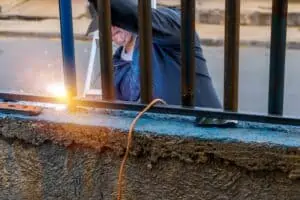Where Can I Get Wood Yard Fencing?
Wood fences are an affordable and attractive way to define property boundaries. They also discourage intruders and keep kids and pets safe. And they can add substantial value to your home.
(Looking for”metal estate fencing“? Contact us Today!)

What is the best type of wood for a fence?
Cedar and redwood are popular choices for residential homes. The former is naturally resistant to insects and weather, while the latter has better resistance to rot. The material can be stained or painted to match your home’s style and color scheme.
Pressure-treated wood is an alternative for a more durable option, especially in areas with high moisture levels or intense heat. It also resists mildew, which can cause rotting and mold.
What is the best type of fence for my yard?
There are a variety of fence styles to choose from, including picket, privacy, and board-on-board. Select a style that matches your personal preferences and budget, and be sure to consider how the fence will affect your privacy and aesthetics.
If you want to maintain your privacy, you can select a fence with no gaps or spacing between the pickets, such as board-on-board fencing. This style can be installed horizontally or vertically and requires less material than a more elaborate fence type, making it cheaper to construct.
Another popular option is side-by-side fencing, which butts the edges of each picket against the next to form a solid wall. You can install this style horizontally or vertically, depending on the look you want to achieve.
How to assemble a wood fence?
If you’re planning on putting up a new fence yourself, begin by digging post holes. This job is labor-intensive, so it’s a good idea to recruit an assistant who can hold the posts and fence panels while you attach them to the ground.
Then, set each 4×4 post in the hole. Make sure the posts are in line and that there is enough room for a fence gate.
Alternatively, you can pour dry concrete into the post hole and run pre-made fence panels between the posts. This saves time and reduces the risk of splinters.
Before you dig the fence post holes, check with your local zoning office to ensure that you can build a fence and comply with the area’s requirements. Some communities require that fences meet certain height and construction standards, while others have restrictions on types of fence materials or may prohibit their use altogether.
Once you’ve dug the post holes, the next step is to set your fence posts in concrete. The concrete hardens within a few hours, and you can then insert the fence panels between them.
If you decide to stain your fence, you’ll need to allow it ample drying time before applying the stain. Staining can make a new fence look more vibrant and help it blend into the surrounding landscape.
Other fence materials include vinyl, wire, and composite. While these are pricier than some other types of fence, they can provide quick curb appeal and are more lightweight than wood. They won’t degrade as quickly and don’t need to be repaired like wood, so they’re more convenient for homeowners.

